There used to be a kind of car called the personal luxury coupe. These were mid-sized two doors with four usable seats and a decent-sized trunk, so they were both stylish and reasonably practical.
Every American car brand offered one and models such as the Olds Cutlass and Pontiac Grand Prix (RIP, both of them and the brands, too) the Ford Thunderbird and – of course the Chrysler Cordoba – were once among the best-selling vehicles on the market.
Now only a few European brands such as Audi still offer something like them, as in the form of the A5 coupe.
What It Is
The A5 coupe is the two-door, four seat version of the A5 five-door hatchback that Audi calls the Sportback.
It is also available as a convertible.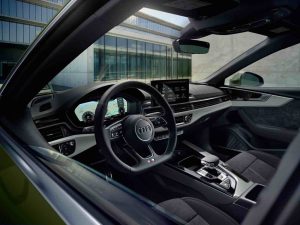
Prices start at $47,700 for the Premium S Line coupe, which comes standard with three zone climate control, a panorama sunroof, leather seats, digital display instrument cluster and a 10.1 inch secondary LCD touchscreen.
The same thing in a convertible stickers for $54,900.
A top-of-the-line Prestige comes with a larger (12.3 inch digital display main gauge cluster, a Bang & Olufsen premium audio system, Matrix LED lights, a Heads-Up Display (HUD) and a surround-view exterior camera system. The coupe version lists for $55,950. The convertible for $64,000.
All trims come standard with Audi’s Quattro all-wheel-drive system and a turbocharged, 2.0 liter four cylinder engine, a 48 volt electric system (used to cycle off the engine as often as possible) a seven speed automatic and all-wheel-drive.
What’s New for 2024
All A5s now come standard with a heated steering wheel as well as automated self-parking and adaptive cruise control.
What’s Good
A two door with four usable seats.
Costs thousands less than a comparably equipped BMW 4 Series coupe ($51,900 to start when equipped with AWD).
Almost 500 miles of highway-driving range.
What’s Not So Good
Small (10.9 cubic feet) trunk.
Nothing more than a 2.0 liter four.
You have to move up to the Premium Plus trim ($51,800) to get the upgraded Bang & Olufsen audio system as well as a wireless phone charger.
Every A5 comes standard with what seems to be becoming standard in everything: A 2.0 liter, turbocharged four cylinder engine. The reason why this type if engine is becoming standard in seemingly everything is because it’s just the right size and type of engine to enable a car company to comply with the various regulations pertaining to how much gas an engine is allowed to burn before its manufacturer faces fines for burning more gas than government regulators say is allowable – and also how much gas (C02) the government says it can “emit.”
It is also large enough to produce sufficient power – when turbocharged – to keep customers interested in buying the vehicle. Eventually, as these regs become even more difficult to comply with than they already are, even 2.0 liters will be too large for mass production cars – and that will probably be the event horizon for every vehicle that isn’t at least a partially electric vehicle (i.e., a hybrid).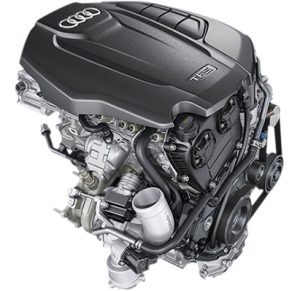
Then the engine can be made even smaller until – inevitably – it disappears altogether.
Technically, the A5 already is a hybrid – though a “mild” one. It has a 48 volt electrical system and a high-voltage battery that powers a high-torque/belt-drive starter. This is used to shut the engine off – and let the A5 “coast” – as often as possible, to save as much gas as possible and also to “emit” as little gas as possible.
For now, though, the A5 still has at least 2.0 liters. It’s not much in comparison with the at-least 3.0 liters or so sixes that used to be the expected engine in a luxury-brand car with a base price of nearly $50k – but it’s better than even less, I guess.
The engine does make impressive power – 261 horsepower – for its size. But only when it is under boost. That means – effectively – that it is always under boost, except when the car is hardly moving. To get it moving requires boost – and that means the engine is almost-always under pressure. The 3.0 liters or so sixes that used to power vehicles like this weren’t – because they didn’t need to be. Some didn’t make as much power as this 2.0 liter four. For example, the 2.8 liter V6 that was available in the similarly sized A4 sedan back in 2000 – the Before Time – only made 190 horsepower.
But engines that aren’t under pressure are likely to last longer for the same reason that a horse that isn’t worked hard is likely to live longer than one that isn’t.
Interestingly, there’s not much gas mileage difference between a V6 from the Before Time and a turbo’d four like this one from our time. The new A5’s 2.0 liter four rates 24 city, 32 highway. The 2000 A4’s available 2.8 liter V6 rated 16 city, 23 highway. When you factor in the horsepower difference (making more power requires burning more gas) the difference is negligible. Put another way, if the 2.8 V6 were hotted up to make 261 horsepower, it’d probably use about the same amount of gas. But it would not need the turbo to make the power.
A seven speed automatic is paired with the 2.0 engine, as is Audi’s Quattro AWD. The A5’s main rival, the BMW 4 Series coupe, is rear-wheel-drive as it comes. AWD is available optionally, pushing the MSRP of this model to just shy of $52k to start. It also comes standard with a turbocharged 2.0 liter four – one that makes 255 horsepower.
Driving the A5 is not like driving a ’70s or ’80s era personal luxury coupe. Most of those had V8 but didn’t have much power. They also weren’t exactly set up to “handle.” They were basically two-door/four seater versions of the big sedans that were then still common; like them, they typically had plushly upholstered bench seats – in fine Corinthian leather, even – and were meant for easygoing driving, especially on the highway.
This was nice, actually – and it’s sad that it’s gone.
The A5 ‘s personality is more luxury-sport coupe/convertible – plus the extra seats. It can get you to 60 MPH in 5 seconds, a timeslip that would have been considered spectacularly quick – for a muscle car – back in the ’60s and ’70s.
The turbo 2.0 engine has other virtues, too. Not only does it make substantially more power than the three-liters-or-so sixes that powered its forebears, it makes much more torque (273 ft.-lbs. of torque) and much lower down in the powerband, which – when called upon – makes the four-cylinder-powered A5 feel as though it is powered by a three-liters-or-so six.
The seven-speed automatic is a dual-clutch type that shifts quickly and authoritatively when asked. It is very much preferable to the continuously variable CVT automatics that are becoming as common as 2.0 liter engines (and for the same reasons). Both for functional (feel/sound) reasons as well as long-term durability reasons.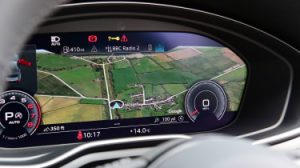
One of the features this Audi has that is an Audi signature feature is that you can display the GPS map (which has 3D graphics very much like Google Earth) directly in the driver’s line-of-sight in the main instrument cluster, as opposed to the usual off-to-the-right in the secondary LCD cluster. The map itself is among the best available in terms of detail as well as appearance but the positioning is particularly stand out. Also appealing – from the driver’s point-of-view – is the driver-canted gear selector and other controls. It echoes the interior design of the first personal luxury coupes, most especially the Pontiac Grand Prix of the late ’60s and early ’70s. Which was designed by the man – John DeLorean – himself.
You do sit a lot lower in this car than the personal luxury coupes of the past – and that can make you feel like a mouse among the elephants, all those high-riding SUVs and crossover. But the upside is you have an adroitness advantage over those lunkers; it’s easy to dart around and in between them, before they even realize you were there.
And now, you’re gone!
Relative to the personal luxury coupes of the past, the A5 is a small car – just 184.9 inches long. To put that in some context, a 1995 Ford Thunderbird was 200.3 inches long, or slightly longer than a current-year mid-sized sedan, such as a Toyota Camry (which is 192.1 inches long).
It’s also smaller than its most similar rival, the BMW 4 Series coupe – which is 187.9 inches long.
The upside to this compact packaging is a package that doesn’t take up as much space in your garage and that also slides more easily into parking spots. The downside is that unlike the mid-sized personal luxury coupes of the past, cars like the A5 and BMW 4 coupe have not much in the way of trunk space or backseat legroom. The slightly smaller Audi actually has slightly more trunk and rearseat legroom – 10.9 cubic feet and 32.7 inches, respectively – than the 4-Series (which has a 10.6 cubic foot trunk and just 32.5 inches of rearseat legroom).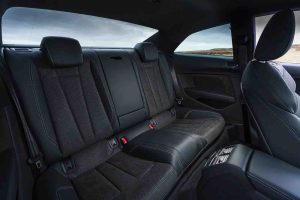
On the plus side, practicality-wise, the Audi’s rear seats have almost as much headroom as the front seats – 36.1 inches vs. 37.8 – because the roofline doesn’t plummet toward the rear, as is common in cars of this type. In this respect, the A5’s accommodations are close to those of the personal coupes of the past, which also had more formal rooflines.
The most important point, of course, is that there are back seats – and that makes this personal coupe (and convertible) at least plausibly practical. It can carry four people in a pinch. Maybe not exactly comfortably – for those in back. But it can carry four – rather than just two. And having those rearseats makes up a lot for the trunk being as small as it is.
The car isn’t flashy. It’s classy. That has long been a big part of the appeal of Audis. It looks a cut-above but doesn’t make a big deal about it.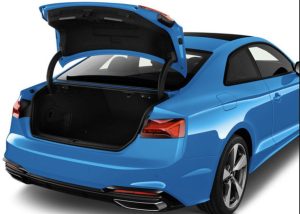
One of the few nits to pick is that the upgrade 3D/surround-sound Ban & Olufsen audio rig with 19 speakers isn’t available as a stand-alone option with the base Premium S Line trim. If you want it, you have to move up a trim to the $51,800 Premium Plus. The good news there is you also get Audi’s “virtual cockpit” instrument cluster, a wireless phone charger and power folding side mirrors.
The bad news is you’ll still need to pay another $1,500 to get the MMI Navigation plus navigation system, which also isn’t available as a stand-alone option with the base Premium S-Line trim.
On the other hand, all trims – including the base Premium S Line – do come standard with a panorama sunroof, a heated steering wheel and ambient interior lighting.
The A5, like other new Audis, has options that are subscription based – meaning you pay to use them as opposed to paying to buy them. For example, if you subscribe to Audi Connect Plus, which “unlocks” features such as in-car gaming (displayed through the secondary touchscreen) as well as Wi-Fi and real-time traffic/news updates.
Also: A V6 is still available – in the high-performance S5 iteration of the A5. This one makes 349 horsepower but the cost to play with it is $56,800 to start. If it seems like V6s are becoming what V12s used to be about 20 years ago – i.e., exotic and for the well-heeled-only – you’d be right on the money.
The Bottom Line
It’s not exactly a personal luxury coupe – but it’s the closest left to what you used to be able to get.
. . .
If you like what you’ve found here please consider supporting EPautos.
We depend on you to keep the wheels turning!
Our donate button is here.
If you prefer not to use PayPal, our mailing address is:
EPautos
721 Hummingbird Lane SE
Copper Hill, VA 24079
PS: Get an EPautos magnet or sticker or coaster in return for a $20 or more one-time donation or a $10 or more monthly recurring donation. (Please be sure to tell us you want a magnet or sticker or coaster – and also, provide an address, so we know where to mail the thing!)
If you like items like the Keeeeeeev T shirt pictured below, you can find that and more at the EPautos store!



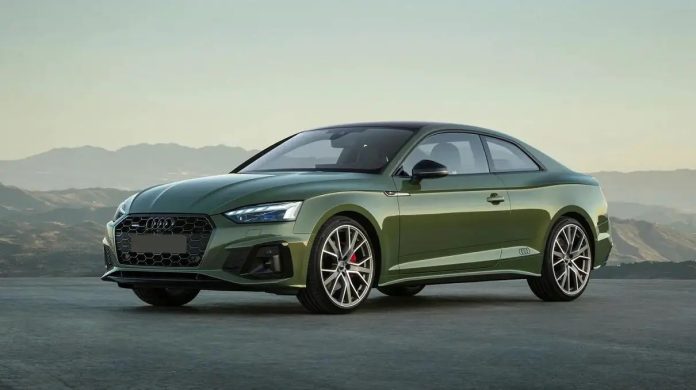

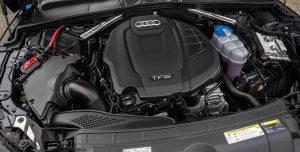
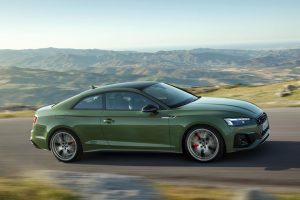
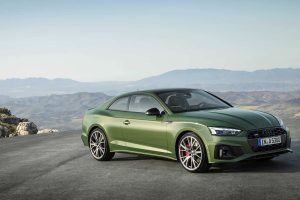








Hi Eric,
“When you factor in the horsepower difference (making more power requires burning more gas) the difference is negligible.”
That’s exactly it. Why would the car companies downsize the engines and put them under pressure, if not for fuel savings? It doesn’t make any sense. Here in Moscow, the market is flooded with Chinese cars (mostly crossovers) and they all come with small turbocharged engines (1.5 liters typical, 2.0 liters max). The horsepowers are ridiculous, too – around 150-170 hp for a 1.5 liters engine. This is insane! But as you can see, they are follow the same party line, same as in your country and elsewhere, too.
Good morning, Yuri!
Yup. I own a 1976 Pontiac Trans-Am. When it was new, the 455 V8 (7.5 liters) it was available with made 200 horsepower.The A5’s 2.0 four makes 261 horsepower. If the 455 made equivalent (per displacement) power, it would be in the vicinity of 1,000 horsepower…
I’ve noticed that while the engines are getting smaller and turbo-charged, that doesn’t seem to be what ultimately fails and kills the car. It seems to be more the transmission and all the peripheral computer/electrical and sensor goblins that kills them.
German engineering is also an Achilles heel. They’re always overly complex. I remember helping a friend replace a battery in a 10-year-old Porsche Cayenne. It was absurdly placed underneath the power driver’s seat. What normally would be a 10 minute job turned into hours.
That Audi is a real looker, but I can’t help thinking it’ll be a nightmare after about 5 years.
Price goes up, engines get smaller, warranties get shorter.
What are we paying for any more?
I once owned a 2003 Oldsmobile Aurora with the 8 cylinder motor. The battery was located under the rear seat. I wanted to replace the battery as it was a used car but I couldn’t find where the battery was located. I looked at all the usual places, engine compartment, trunk and it wasn’t until I looked the at service manual that I discovered that the battery was under the rear seat. I forget what the instructions were for a jump start.
I miss when Audi used superchargers instead of turbochargers.
I really like the A7. Have you noticed it’s hard to find what engines they have?
It’s like they think no one cares or they don’t want to say cause they are embarrassed.
The new Audi RS3 5 cylinder is very cool…it is 1/2 of a Lamborghini V10 engine…
They built the quickest EV possible, the tesla plaid, to make it look like ice cars are slow and EV’s are fast, this was the marketing plan….the opposite is true though..
this little 5 cylinder ice Audi RS3 with only one engine is a lot quicker then the plaid with THREE engines (motors)…lol…those electric motors are weak…and require a 1800 lb battery…
This tuned Audi RS3 has more power 1100 hp, then a tesla plaid, which has 1020 hp.
This Audi RS3 is far lighter at 3000 lb, then a tesla plaid which weighs 4828 lb, that is why it is quicker.
The RS 3 you can actually hear and feel, it is alive, the sound of this thing is wild, EV’s are dead no emotion or fun……the tesla plaid is dead, no fun.
A brand new Audi RS 3 starts off at a base price of $56,200 in the USA, MSRP.
You can buy and tune an RS 3 for less then a tesla plaid and it is quicker, this RS 3 ran an 8.4 second quarter mile. 0 to 60 1.3 seconds. 3000 lb 1100 hp.
This RS 3 is a better solution then buying a 4828 lb. tesla plaid. ice cars are better then EV’s.
https://www.hotcars.com/worlds-fastest-audi-rs3-drag-races-ken-blocks-1400-hp-mustang-hoonicorn/
the sound of this thing is insane, listen at 2:52 in video…
That’s sick. RIP Ken Block.
He did all the craziest shit and died on a snowmobile, sucks.
Sorta me too, but I haven’t died yet. craziest shit ever on motorcycles, even hit the wall at Pocono raceway at 100mph, and didn’t walk for 9 months. glad i’m here.
And I fall down a wetwell at WORK cause i guy opened a hatch cover behind me and didn’t tell me (i was standing right next to it), and I went down hard, luckily caught myself from going down 6-8 feet, but my shoulder is now screwed up bad, didn’t sleep well for 3-4 months, but better now. They want to do surgery and I won’t do it. take the minor pain now, I guess forever, or go under with questionable results.
I think Eric described a similar situation?
An interesting history of Audi….
An evolution of a Mercedes engine in the Audi A5….it could be the best 4 cylinder engine in the world….
Daimler- Benz had acquired a majority share in Auto Union in 1958 and took full control in 1959.
Auto Union was formed in 1932 with its four-ring badge standing for the constituent marques of Audi, DKW, Horch and Wanderer and in the early 1950s, it was mainly associated with small cars sold under the DKW name.
In 1958 Daimler-Benz’s Chief Engineer Fritz Nalliger asked Ludwig Kraus of the “Construction Development” to develop an in-house mid-sized car, and the result was an extremely elegant FWD saloon in two or four-door guise. The initial idea was for it to be powered by a 1.5-litre “boxer” engine (no boxer engine was developed…. the car would be called the (the Mercedes W118)
Kraus was seconded to Ingolstadt to take charge of a product modernisation project, and he was appointed Technical Director in late 1963.
but the prototype would eventually gain a newly developed a 1.7-litre in-line high-compression engine the M118……
The M118 was developed earlier by Daimler-Benz as part of a military project
The engines of the F103 series were a development of Daimler-Benz for a military project that never came into being. They were dubbed the Mitteldruckmotor (medium-pressure engines) because of their unusually high BMEP (mean effective pressure, as calculated from brake torque) values, which led to a good thermodynamic efficiency. …the M118 was designed to run on multiple fuels, including diesel…so it was very strong…
The engines had spiral-formed intake channels that gave the fuel-air mixture a good swirl. The engine had Heron-type combustion chambers with broad squish bands, further enhancing the mixture swirl and aiding good combustion. These features made it possible to use very high compression ratios for the time. The initial engine version had a CR of 11.2 to 1 for 98 RON fuel and even the engines intended for 92 RON fuel had a CR of 9 to 1, which was a very unusually high value for the time
the car was called the Mercedes W119. When it was unveiled circa 1960, it seemed logical that it would be made by Auto Union as they had extensive experience of building small cars.
Instead of building the W119 Mercedes……. the design was tweeked to make the DKW F102 was built instead………..(later rebadged as an Audi)
A nip and tuck procedure brought the car, the mercedes-w118 back in line with what an
ATTENTION: Audi was expected to look like back in the era.
The result was the 1963 DKW F102 …later called the Audi F103…sedan, an uncluttered three-box design with thin pillars and a large greenhouse note………(a modified Mercedes W118 design).
curb weight, 910 kg / 2006 lbs
and such technological developments as the inboard front disc brakes…..but….. Under the bonnet was a 1.2-litre two-stroke unit but this was now too associated with ageing machinery built in the DDR. ……the M118 engine wasn’t available then….it was used later on in the Audi F103….
In 1964 Daimler-Benz sold its subsidiary – it wanted the funds to construct a commercial vehicle plant – to Volkswagen, and the idea of a generation of compact four-stroke cars bearing the three-pointed star seemed dormant.
But two key assets were also transfered to VW: the M118 engine project and its creator, Ludwig Kraus.
Kraus remained with Auto Union and to revitalise the F102;
his solution was to longitudinally mount the 1.7-litre M118 engine from the Mercedes W119 in the bay of the DKW……DKW’s F102 now renamed the Audi F103…..
The Mercedes M118 four-cylinder four-stroke medium-pressure engine…….. was installed in Audi 60, Audi 75, Audi 80 and Audi Super 90…..it was called the EA827 in the Audi 80….then in the Audi 100… EA831…..from 1968, with a displacement of 1.9 liters and 100 hp…….in the Audi 100 the M118-derived 1.9 -litre was called the EA831 ….,
Later, the EA831 with an overhead camshaft driven by a toothed belt, ended up in the Audi 80, the VW LT, the VW Golf, the AMC Gremlin, the Porsche 924..in the 924 it was called the 047…in the 924 turbo it was called the M31…. and served as the basis for many VW engines…like the famous 1.8 20vt….evolving into today’s VW Audi 4 cyl engines….the EA888
Porsche 924: Porsche designed a new cylinder head…. Sump… Crank, pistons and rods. The only thing left was the cylinder block from the Mercedes M118 engine (later the Audi engine)……in the 924 it was called the 047…in the 924 turbo it was called the M31
The legendary Audi 5 cylinder engines….
VW/Audi 5 cylinder engines……The first of the 5 cylinders was based on the new in-line 4 EA827….which evolved from the M118….. . That engine was the one used throughout the Audi and Volkswagen range in the 1970s and 80s.
Here is a 1965 Audi F103 4 door sedan
It cost $1,997 in U.S. dollars in 1965….$19,670 today…in 2024 dollars…
It had the Mercedes M118 engine in it….and that was advertised then…a selling point…
Now we have the 2024 Audi A5 with an evolution of the same Mercedes M118 engine in it ….but it starts at $47,700 now…and it weighs 3680 lb…
The original 1965 Audi F103 4 door sedan would probably sell today if it was still available….it is simpler, lighter…it weighed 2100 lb….it was a lot cheaper, it was totally analog with no computer crap or self driving aids, it was simpler so probably more reliable then the new Audi’s, it was far more simple/easy to work on,
2100 lb….why does the 2024 Audi A5 weigh 3680 lb?….
Cars were better in the 1960’s….
http://www.autovehicle.info/audi-f103/detay/audi-f103-1965-1972-4451.html